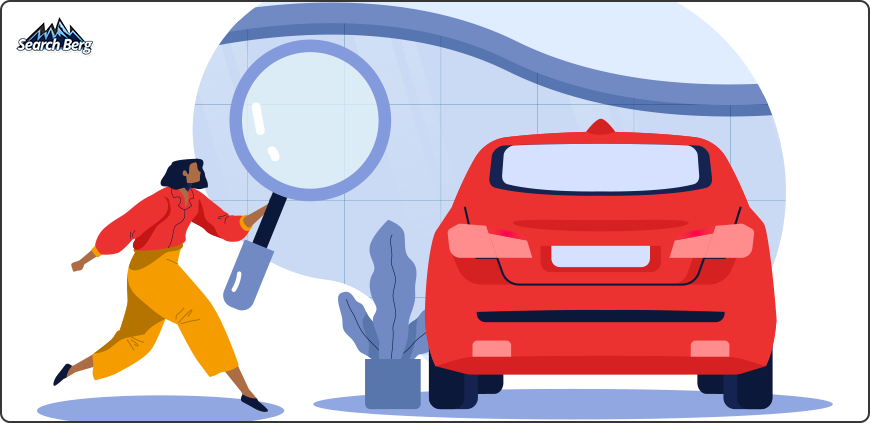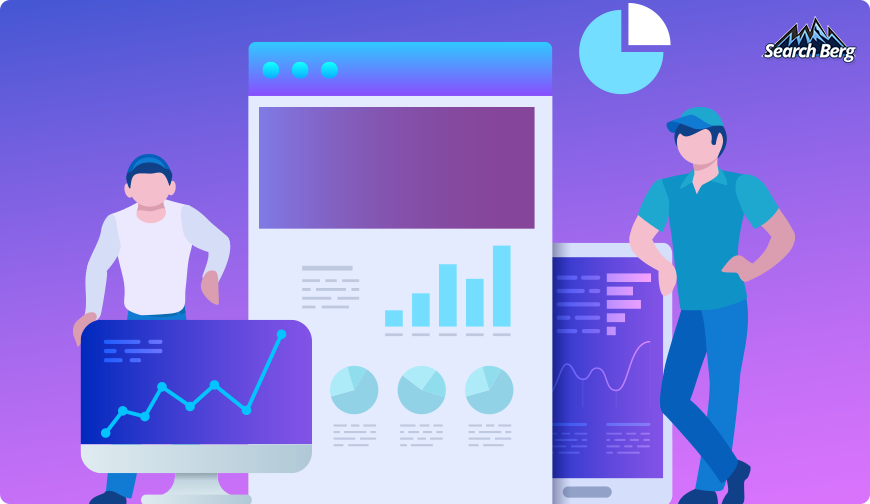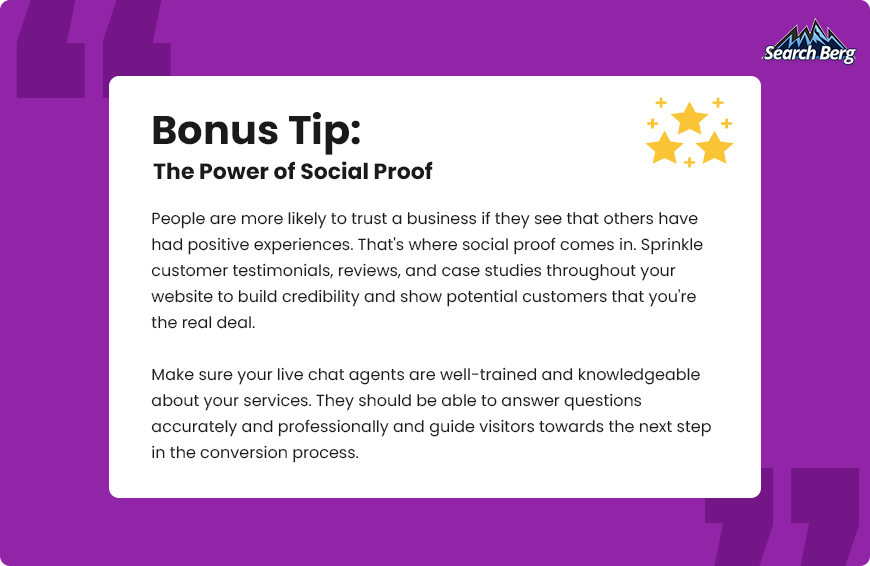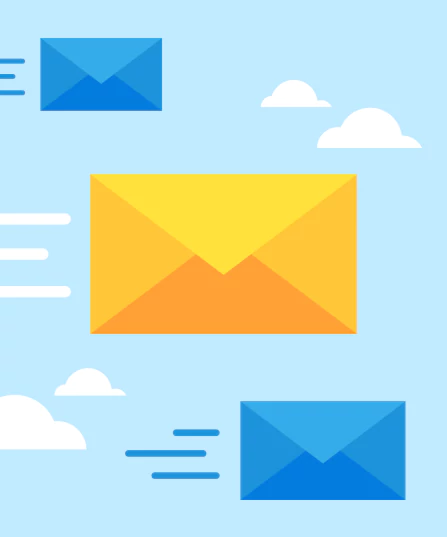What’s the Average Cost Per Lead for Auto Repair Shops? Real Data Insights

Think of two auto repair shops.
Shop Agoes all-in on flashy online banner ads and catchy radio jingles. They pour thousands into their marketing budget, hoping to make a splash.
But months later, the results are underwhelming. Their phone isn’t ringing off the hook, and their appointment book is looking sparse.
Meanwhile, Shop B takes a different approach. They’ve done their homework. They know exactly how much it should cost them to acquire a new lead, i.e., a potential customer interested in their services. They invest strategically in targeted online ads, optimize their website to capture leads, and track their results meticulously.
The outcome? They see a steady stream of new customers.
The difference between these two shops? Shop B understands the power of cost per lead (CPL). They’ve cracked the code to efficient and effective marketing in the auto repair industry.
In this guide, we’ll reveal the average auto repair shop lead cost based on real data from our clients’ Google Ads campaigns. We’ll explore the factors that influence this vital metric. Most importantly, we’ll equip you with actionable strategies to lower your CPL, maximize your marketing ROI, and drive sustainable growth for your auto repair business.
Are you with us?
Understanding the Cost Per Lead (CPL)
Attracting new customers is the lifeblood of any successful auto repair shop. But with so many marketing options available, how can you ensure your efforts are efficient and cost-effective?
The cost per lead (CPL) represents the amount you spend to acquire a single lead. This could be someone who calls your shop after seeing your ad, fills out a contact form on your website, or engages with your business on social media.
Why is CPL so important for auto repair shops?
Here’s why:
- Budget Optimization: Knowing your CPL helps you allocate your marketing budget wisely. You can identify which channels and campaigns are generating leads at the lowest cost and focus your resources on those that deliver the best results.
- Performance Tracking: CPL allows you to track the effectiveness of your marketing efforts over time. By monitoring changes in your CPL, you can identify areas for improvement and make data-driven decisions to optimize your campaigns.
- Profitability Analysis: Understanding your CPL is essential for calculating your customer acquisition cost and determining the overall profitability of your marketing investments.
- Competitive Advantage: By bench marking your CPL against industry averages, you can gain insights into your competitive landscape and identify opportunities to improve your performance.
As the auto repair market becomes increasingly competitive, understanding your CPL has become essential for success.
What Does the Data Say?
Now, let’s get down to brass tacks.
We’ve analyzed data from our auto repair clients’ Google Ads campaigns throughout 2024, and the numbers tell a compelling story.
On average, our clients spend $25 to acquire a single lead. This means that for every phone call, form submission, or online chat inquiry they received from a potential customer, they invested roughly $25 in marketing efforts to make it happen.
Here’s a snapshot of the key metrics:

Now, let’s unpack these numbers and see what they reveal about the auto repair marketing terrain.
1. Average Cost Per Lead (CPL)
This figure serves as a valuable benchmark for your own marketing efforts. If your CPL is significantly higher than $25, it may be time to re-evaluate your strategy and identify areas for optimization. Conversely, if your CPL is lower than $25, congratulations! You’re on the right track.
Factors Influencing Your CPL
- Location, Location, Location
As the saying goes, location is everything. If your shop is in a densely populated urban area with high competition, your CPL is likely to be higher than a shop in a smaller town with fewer competitors. This is because you’ll be competing with more businesses for the same online real estate, driving up ad costs.
If you’re in a competitive market, consider refining your targeting to focus on specific neighborhoods or demographics. This can help you reach the most relevant audience and reduce your CPL.
- Service Specialization
Do you specialize in a niche service like transmission repair or classic car restoration? Specialized services often command a higher CPL due to lower search volume and a more targeted audience. This is because fewer people are searching for these specific services, making the competition for those keywords more intense.
If you specialize in a niche service, consider creating highly targeted ad campaigns that focus on long-tail keywords and specific customer needs. This can help you attract the right audience and justify a higher CPL.
- Campaign Objectives
Are you focused on generating immediate leads or building brand awareness? Campaigns designed for immediate leads may have a higher CPL due to more aggressive bidding strategies. This is because you’re essentially paying a premium to get your ads in front of people who are ready to convert right away.
If your goal is to generate immediate leads, be prepared to invest more in your campaigns and use bidding strategies that prioritize conversions. If your goal is brand awareness, you can afford to be more patient and use bidding strategies that focus on reach and impressions.
Analyzing Your CPL
- Compare to the Benchmark
How does your CPL compare to the $25 average? If it’s significantly higher, it’s worth investigating why and exploring strategies to reduce costs.
Use Google Analytics and Google Ads reporting tools to track your CPL and identify areas for improvement. Look for patterns in your data, e.g., high bounce rates on landing pages or low click-through rates on ads, that could be contributing to a high CPL.
- Track Trends Over Time
Is your CPL trending upwards or downwards? This can indicate the effectiveness of your marketing efforts and help you identify areas for improvement.
Ask your Google Ads management team to set up regular reporting to monitor your CPL trends. If you see your CPL increasing, it could be a sign that your campaigns are becoming less effective or that competition is increasing.
Take action to adjust your strategy and bring your CPL back down.
- Segment Your Data
Analyze CPL by campaign, channel, or even keyword to pinpoint areas of strength and weakness.
Use segmentation to identify which campaigns, channels, and keywords are driving the most cost-effective leads. This can help you focus your resources on the areas that are generating the best results.
2. Conversion Rate
This indicates that for every 100 people who clicked on our clients’ ads, 12 of them converted into leads. This highlights the importance of not just driving traffic to your website, but also ensuring that your landing pages are optimized to capture those visitors’ information and convert them into qualified leads.
Which Factors Influence Your Conversion Rate?
- Website Design and User Experience
Is your website easy to navigate, mobile-friendly, and visually appealing? A positive user experience can significantly impact your conversion rate. A website that is difficult to use or doesn’t look good on mobile devices will likely turn visitors away before they have a chance to convert.
Invest in a professional website design that is user-friendly and mobile-responsive. Make sure your website is easy to navigate, loads quickly, and provides a clear path for visitors to find the information they need and take action.
- Landing Page Optimization

Are your landing pages clear, concise, and compelling? Do they have a strong call to action that encourages visitors to take the next step? A landing page that is cluttered, confusing, or lacks a clear call to action will likely result in a low conversion rate.
Create dedicated landing pages for each of your ad campaigns. Make sure your landing pages are relevant to the ad copy and have a clear and concise message that focuses on the benefits of your services. Use strong headlines, persuasive copy, and prominent calls to action to encourage visitors to convert.
- Offer and Value Proposition
Are you offering something valuable to your potential customers? A clear and compelling offer can incentivize visitors to convert. This could be a discount on their first service, a free inspection, or a valuable piece of content like a guide to car maintenance.
Communicate the value proposition of your services on your landing pages and in your ad copy. Highlight the benefits of choosing your shop over the competition, such as your expertise, experience, or customer service.
Improve Your Conversion Rate
- A/B Testing
Let’s be honest, sometimes marketing feels like a guessing game. But what if you could take the guesswork out of optimizing your website? That’s where A/B testing comes in. It’s like having a scientific method for your marketing.
Here’s how it works. You create two versions of your landing page with slight variations, like a different headline or call to action. Then, you show each version to a portion of your visitors and track which one performs better. Boom! You’ve got data-driven insights to guide your optimization efforts.
Test different elements like headlines, images, copy, and calls to action to find the winning combination.
For example, you could test two different headlines, one that focuses on price (“Get the Best Prices on Auto Repair”) and another that focuses on expertise (“Experienced Mechanics You Can Trust”). Track which headline leads to more conversions and use that version on your landing page.
Pro Tip: Don’t just test big changes. Sometimes, even small tweaks like changing the color of a button or rephrasing a sentence can make a significant difference.
- Form Optimization
Say you walk into a store, ready to buy something, but the checkout process is a nightmare. Long lines, complicated forms, and confusing instructions. You may just walk out, right? The same goes for your website.
If your contact forms are long, complicated, or ask for too much information, you’re going to scare potential customers away. Keep it simple, keep it concise, and make it easy for people to get in touch.
Consider using a multi-step form to break down the process into smaller, more manageable steps. This can make the form seem less challenging and increase the likelihood of completion.
- Live Chat
Ever been on a website, ready to buy something, but had a quick question? Live chat is like having a friendly salesperson right there on your website, ready to answer questions, provide information, and guide visitors towards conversion.
It’s a fantastic way to build trust, address concerns, and provide instant support. Plus, it shows potential customers that you’re responsive and care about their needs.
Make sure your live chat agents are well-trained and knowledgeable about your services. They should be able to answer questions accurately and professionally and guide visitors towards the next step in the conversion process.

3. Number of Leads
The total number of leads generated (4,741) provides valuable context for the CPL and conversion rate. While a lower CPL is generally desirable, it’s important to also consider the volume of leads you’re generating.
Factors That Fuel Lead Generation
Generating leads is like building a fire. You need the right ingredients and the right conditions to get those flames roaring.
Here are the key factors that fuel lead generation for auto repair shops:
- Search Volume
Let’s say your ideal customer is searching for “brake repair near me” on Google. How many people are searching for that phrase every month? That’s your search volume. The higher the search volume, the more potential customers you can reach with your ads.
Now, here’s the catch: high-volume keywords often come with fierce competition, which means you’ll need to bid higher to get your ads seen. That’s where keyword research comes in.
Don’t just focus on the obvious keywords. Dig deeper and explore long-tail keywords (longer, more specific phrases) that your target audience might be searching for. These often have lower competition and higher conversion rates.
- Ad Relevance
Okay, you’ve found the right keywords. Now, it’s time to craft ads that grab attention and entice clicks. But here’s the secret sauce: your ads need to be laser-focused on the keywords you’re targeting.
Think of it like this. If someone searches for “oil change near me,” they don’t want to see an ad for tire rotations. They want to see an ad that screams “We do oil changes! And we do them well!”
Use the keywords in your headlines and descriptions, and make sure your ads accurately reflect the content of your landing pages. This creates a seamless experience for the user and improves your Quality Score (more on this later).
- Budget
Let’s be honest, you can’t generate leads without spending some money. Your advertising budget is the fuel that powers your lead generation engine. The more fuel you have, the further you can go.
But you don’t need to break the bank to get started. Start with a realistic budget that you can afford to spend, and gradually increase it as you see positive results from your campaigns.
Don’t just set it and forget it. Monitor your campaign performance closely and adjust your budget as needed to achieve your desired lead volume.
How to Increase Your Lead Volume
Now that you understand the key ingredients, let’s fire up those lead-generation engines!
Here are some proven strategies to attract more potential customers to your auto repair shop:
- Expand Your Keyword Universe
Remember those long-tail keywords we talked about? They’re like hidden gems waiting to be discovered. Use keyword research tools to reveal a treasure trove of relevant long-tail keywords that your target audience is searching for.
For example, instead of just targeting “car repair,” you could also target “car repair for Honda Civic in [your city].” This allows you to reach a more specific audience and increase your chances of generating qualified leads.
- Craft Killer Ad Copy
Your ad copy is your chance to make a lasting impact. Make it count! Use strong headlines, clear and concise language, and an engaging call to action to entice people to click on your ads.
Highlight the benefits of choosing your shop over the competition. Do you offer free estimates? 24/7 emergency service? Lifetime warranties? Let people know what makes you special!
- Don’t Be Afraid to Invest
If you’re seeing positive results from your campaigns, don’t be afraid to increase your budget and scale your lead generation efforts. The more you invest, the more potential customers you can reach.
But remember, it’s not just about spending more, it’s about spending smart. Track your spending carefully and adjust your budget as needed to achieve your desired lead volume.
4. Average Cost Per Click (CPC)
We’ve covered the cost per lead, the conversion rate, and the importance of generating a healthy volume of leads. But there’s another vital piece of the puzzle we need to talk about: the cost per click (CPC).
Think of CPC as the entry fee to the lead generation game. Every time someone clicks on your ad, you pay a certain amount.
Now, you may be thinking, “Why should I care about clicks? I want leads and customers!”And you’re right, ultimately, it’s about those conversions. But here’s the thing: clicks are the gateway to those conversions. You can’t generate leads if no one is clicking on your ads in the first place.
So, how much does a click cost in the auto repair world? Based on our data, the average CPC for our clients ranged from $3 to $5. That means every time someone clicks on their Google Ads, they pay somewhere between a fancy cup of coffee and a quick lunch.
You may be thinking, “Ouch, that seems like a lot for just one click!” And you’re right, clicks can be expensive, especially in competitive industries like auto repair. But here’s the good news: you have the power to influence your CPC and get more bang for your buck.
Factors That Influence Your CPC
Before we explore strategies to lower your CPC, let’s understand the forces at play.
Here are the key factors that determine how much you’ll pay for each click:
- Keyword Competition
If you’re bidding on the keyword “car repair near me,” you’re not alone. Every other auto repair shop in your area is probably bidding on that same keyword too. It’s like a digital auction, and the highest bidder often wins the top spot.
The more competition there is for a keyword, the higher the CPC will be. It’s simple supply and demand. If everyone wants a piece of the pie, the price of the pie goes up.
If you’re targeting highly competitive keywords, be prepared to pay a premium. But don’t worry! There are ways to reduce your costs, which we’ll discuss later.
Recommended Read: How to Find the Right Keywords for Google Ads
- Quality Score

Ever noticed how some ads seem to always be at the top of the search results page, while others are buried at the bottom? That’s where Quality Score comes in.
Think of Quality Score as Google’s way of rating your ads and landing pages. The higher your Quality Score, the more relevant and useful Google thinks your ads are to users.
And guess what? Google loves to reward advertisers who provide a positive user experience.
Focus on creating high-quality ads and landing pages that are relevant to your target keywords. Use clear and concise language, strong calls to action, and relevant images and videos. Make sure your landing pages load quickly and are easy to navigate.
- Ad Rank

Ad Rank is your ad’s position in the Google search results pecking order. The higher your Ad Rank, the higher your ad will appear on the page. And guess what? Higher visibility often means more clicks.
But here’s the catch: a higher Ad Rank can also mean a higher CPC. Why? Because you’re essentially paying for that prime real estate on the search results page.
To improve your Ad Rank, focus on improving your Quality Score and bidding strategically on keywords that are relevant to your business.
Strategies to Slash Your CPC and Boost Your ROI
Now that you understand the factors that influence your CPC, let’s talk about how to take control and lower your costs.
Here are some proven strategies to slash your CPC and boost your ROI:
- Elevate Your Quality Score
Remember, Google rewards advertisers who prioritize a positive user experience. By focusing on the following key areas, you can boost your Quality Score and potentially lower your CPC.
Ensure your ad copy aligns perfectly with the keywords you’re targeting. Incorporate those keywords naturally in your headlines and descriptions, and ensure your ads accurately reflect the content and offer on your landing pages. This creates a seamless experience for the user, signaling to Google that your ad is relevant to the search query.
This isn’t a one-person job. Work with a dedicated Google Ads management team to make effective changes that actually boost your Quality Score.
- Refine Your Bidding Strategy
Bidding strategically is vital for maximizing your ad spend and achieving your desired results.
Consider these approaches:
- Manual Bidding: This option gives you granular control over your bids. You set your own bids for each keyword based on your budget and campaign goals. This allows for precise control and flexibility but requires more time and expertise to manage effectively.
- Automated Bidding: Leverage Google’s machine learning algorithms to optimize your bids based on your campaign objectives. This can save time and improve efficiency, especially for large and complex campaigns. However, it requires relinquishing some control over your bids.
Experiment with different bidding strategies to determine the most effective approach for your specific needs and goals.
You can also combine manual and automated bidding to achieve a balance of control and efficiency.
- Precision Targeting
Imagine trying to hit a bullseye with a shotgun versus a sniper rifle. The more targeted your approach, the more likely you are to hit your mark and avoid wasting resources.
The same principle applies to online advertising.
Leverage Google Ads’ powerful targeting options to refine your audience based on demographics, location, interests, and online behavior. This ensures your ads are reaching the most qualified potential customers, reducing wasted ad spend and lowering your CPC.
For instance, if you specialize in repairing a particular car brand, you can target your ads specifically to owners of those vehicles in your local area. This precision targeting ensures your ads are seen by the most relevant audience, increasing the likelihood of clicks and conversions while reducing wasted impressions on uninterested users.
Remember, optimizing your CPC is an ongoing process, not a one-time task.Request your Google Ads service provider to proactively monitor your campaign performance, analyze your data, and make adjustments to your bidding strategies, targeting, and ad creatives.
Beyond the Numbers
While the data we’ve explored provides valuable insights into the cost of acquiring leads, it’s important to remember that CPL is just one piece of the puzzle.
To truly understand the effectiveness of your marketing efforts and drive meaningful business growth, we need to look beyond the numbers and consider two vital aspects: ROI and client behavior.
1. ROI Comparison: Apples to Apples
Return on investment (ROI) is the holy grail of marketing. It’s the ultimate measure of whether your campaigns are generating a profit or simply burning a hole in your pocket.
But comparing ROI across different campaigns or budgets can be tricky. It’s like comparing apples and oranges; unless you’re comparing the same type of fruit, it’s hard to get a meaningful comparison.
Here are some key factors to consider when comparing ROI:
- Campaign Goals
A campaign focused on brand awareness will have a different ROI than a campaign focused on generating immediate leads. Brand awareness campaigns are about building long-term value, while lead generation campaigns are about driving short-term conversions.
Example: A brand awareness campaign might result in a lower CPL but a longer sales cycle, while a lead generation campaign might have a higher CPL but a shorter sales cycle.
- Targeting Criteria
The audience you’re targeting can significantly impact your ROI. A campaign targeting a broad audience will likely have a lower conversion rate but a higher reach, while a campaign targeting a specific niche will have a higher conversion rate but a lower reach.
Example: A campaign targeting “car owners” will have a lower CPL than a campaign targeting “BMW owners in Los Angeles.”
- Industry Benchmarks
It’s important to compare your ROI to industry benchmarks to see how you stack up against the competition. This can help you identify areas where you’re excelling and areas where you need to improve.
Example: If the average ROI for auto repair shops is 10%, and your ROI is 15%, you’re doing well. But if your ROI is 5%, you might need to re-evaluate your strategy.
To make meaningful ROI comparisons, it’s important to ensure you’re comparing apples to apples.
This means comparing campaigns with similar goals, targeting criteria, and industry benchmarks.
Here are some tips for making meaningful ROI comparisons:
- Clearly Define Your Campaign Goals: Before you launch a campaign, clearly define your goals. Are you trying to generate leads, increase brand awareness, or drive sales?
- Use Consistent Metrics: When comparing ROI, use consistent metrics across all campaigns. This will make it easier to compare apples to apples.
- Track Your Results: Track your campaign results carefully and use the data to make informed decisions about your marketing strategy.
2. Client Behavior Insights
While data and metrics are essential for understanding your marketing performance, it’s important to remember that there’s a human element to the equation as well.
Your clients’ behavior (how they interact with your business, how quickly they respond to your outreach, and how effectively they follow up with leads) can significantly impact your conversion rate and overall success.
Here are some key insights into client behavior:
- Responsiveness
How quickly do you respond to leads? The faster you respond, the more likely you are to convert a lead into a customer.
In 2025, people expect immediate responses. If you take too long to get back to them, they might move on to a competitor.
Example: If you receive a lead through your website’s contact form, aim to respond within an hour, if not sooner.
- Follow-Up
Do you have a clear follow-up strategy in place? Following up with leads is essential for nurturing relationships and moving them through the sales funnel. Many leads don’t convert right away. They might need more information, a gentle nudge, or a special offer to convince them to take the next step.
Example: After responding to a lead, follow up with them a few days later to see if they have any questions or need more information.
- Communication
How effectively do you communicate with your clients? Clear, concise, and professional communication is essential for building trust and rapport. No one wants to do business with a company that is difficult to communicate with or that doesn’t seem to understand their needs.
Example: Use personalized communication, address your clients by name, and tailor your messages to their specific needs and interests.
- Optimizing Client Behavior
While you can’t control your clients’ behavior entirely, there are things you can do to influence it and improve your conversion rate:
- Set Clear Expectations: Communicate your service offerings, pricing, and turnaround times clearly upfront to avoid misunderstandings and frustration.
- Provide Excellent Customer Service: Go above and beyond to meet your clients’ needs and exceed their expectations. This will build loyalty and encourage them to refer you to others.
- Use Technology to Your Advantage: Use CRM software to track leads, automate follow-up, and personalize communication.
While data and technology are important tools for optimizing your marketing efforts, it’s important to remember that the human touch still matters. Building relationships with your clients, understanding their needs, and providing exceptional service are essential for long-term success.
By combining data-driven insights with a human-centric approach, you can create a winning formula for attracting and retaining customers and driving business growth.
Frequently Asked Questions
- What is the average cost per lead for auto repair shops?
Based on our analysis of Google Ads campaigns, the average cost per lead for auto repair shops is $25. This means that, on average, shops spent $25 for each person who contacted them, filled out a form, or showed interest in their services.
- How is the cost per lead calculated for auto repair businesses?
The cost per lead is calculated by dividing your total marketing spend by the number of leads generated. For example, if you spend $500 on a Google Ads campaign and generate 20 leads, your CPL would be $25.
- Which factors can influence my auto repair shop’s lead cost?
Several factors can impact your shop’s lead cost, including your location, the level of competition in your area, the quality of your website and landing pages, and the effectiveness of your Google Ads management efforts.
- How can I reduce my auto repair shop’s lead generation costs?
To reduce your lead generation costs, focus on optimizing your website and landing pages for conversions, improving your Google Ads Quality Score, refining your targeting, and implementing cost-effective marketing strategies.
- How can I improve my auto repair business’ marketing ROI?
To improve your marketing ROI, closely track your results, analyze your data, and make data-driven decisions to optimize your campaigns. Consider using tools like Google Analytics and Google Ads reporting to monitor your key metrics and identify areas for improvement.
- How can I get more auto repair marketing insights to improve my CPL?
To gain more marketing insights, consider partnering with a digital marketing agency that specializes in the auto repair industry. At Search Berg, we can provide expert guidance and support to help you optimize your campaigns and achieve your marketing goals.
Partner with Search Berg for Expert Guidance
Feeling overwhelmed? Don’t worry, you don’t have to tackle the complexities of auto repair marketing alone. At Search Berg, we’re passionate about helping auto repair shops like yours thrive.
Our team of experts provide customized Google Ads management services to help you:
- Reduce Tour CPL: We’ll optimize your campaigns to ensure you’re getting the most leads for your budget.
- Improve Your Conversion Rate: We’ll create high-converting landing pages and implement effective lead generation
- Maximize Your ROI: We’ll track your results and provide auto repair marketing insights to help you make data-driven decisions.
We also provide automotive SEO services to help your shop stand out on Google search engine results pages (SERPs), earn more traffic, get more calls, and book more clients.
Contact Search Berg today for a free consultation and discover how we can help you achieve your marketing goals and drive business growth in 2025.
Get Your Free SEO Consultation
Ready to take your marketing to the next level and leave the heavy lifting to the pros? Get in touch with Search Berg today for a free consultation. Our team of auto repair marketing specialists will analyze your current strategy, discuss your goals, and provide a customized roadmap to help you dominate your local market.
No spam, just expert advice!














